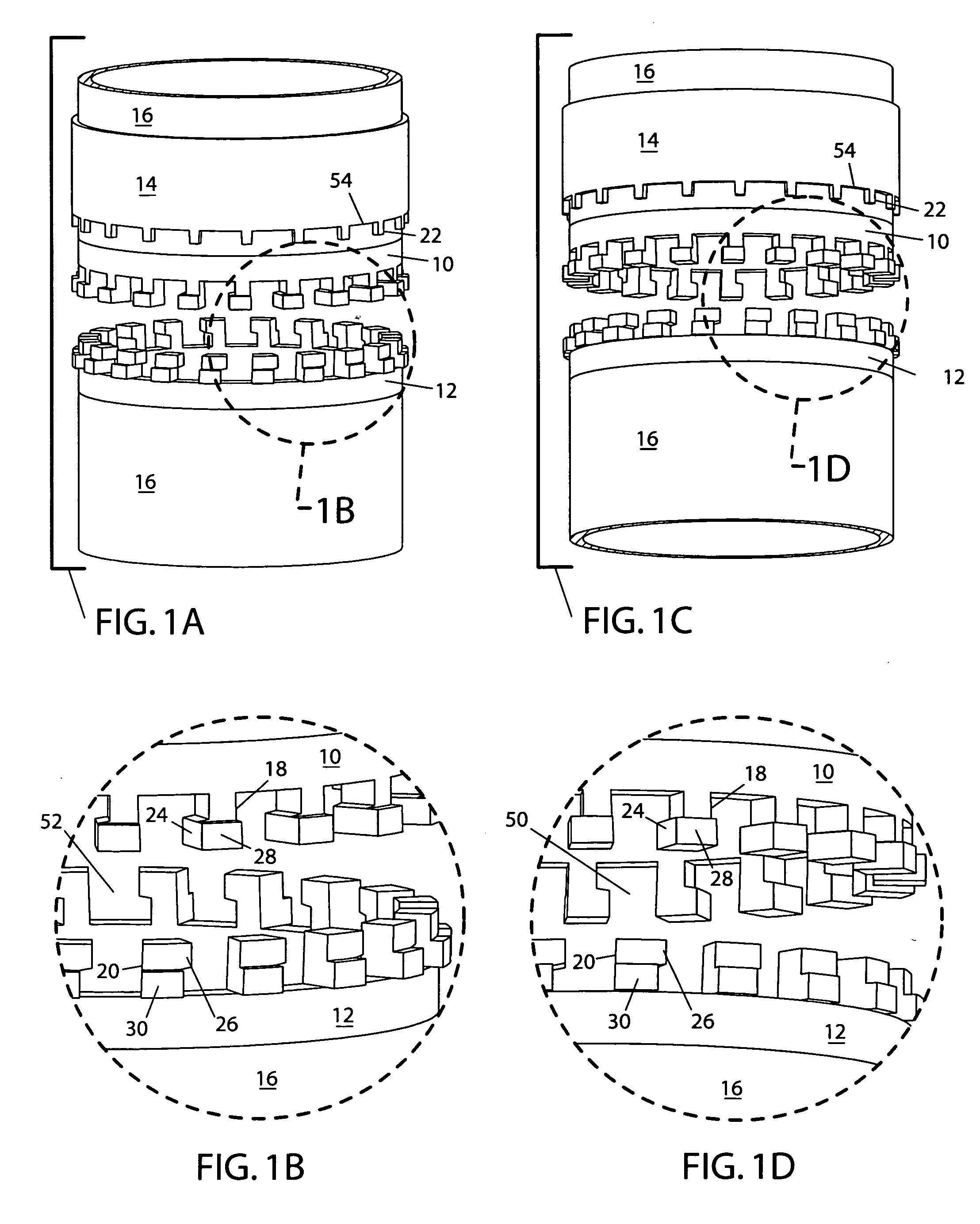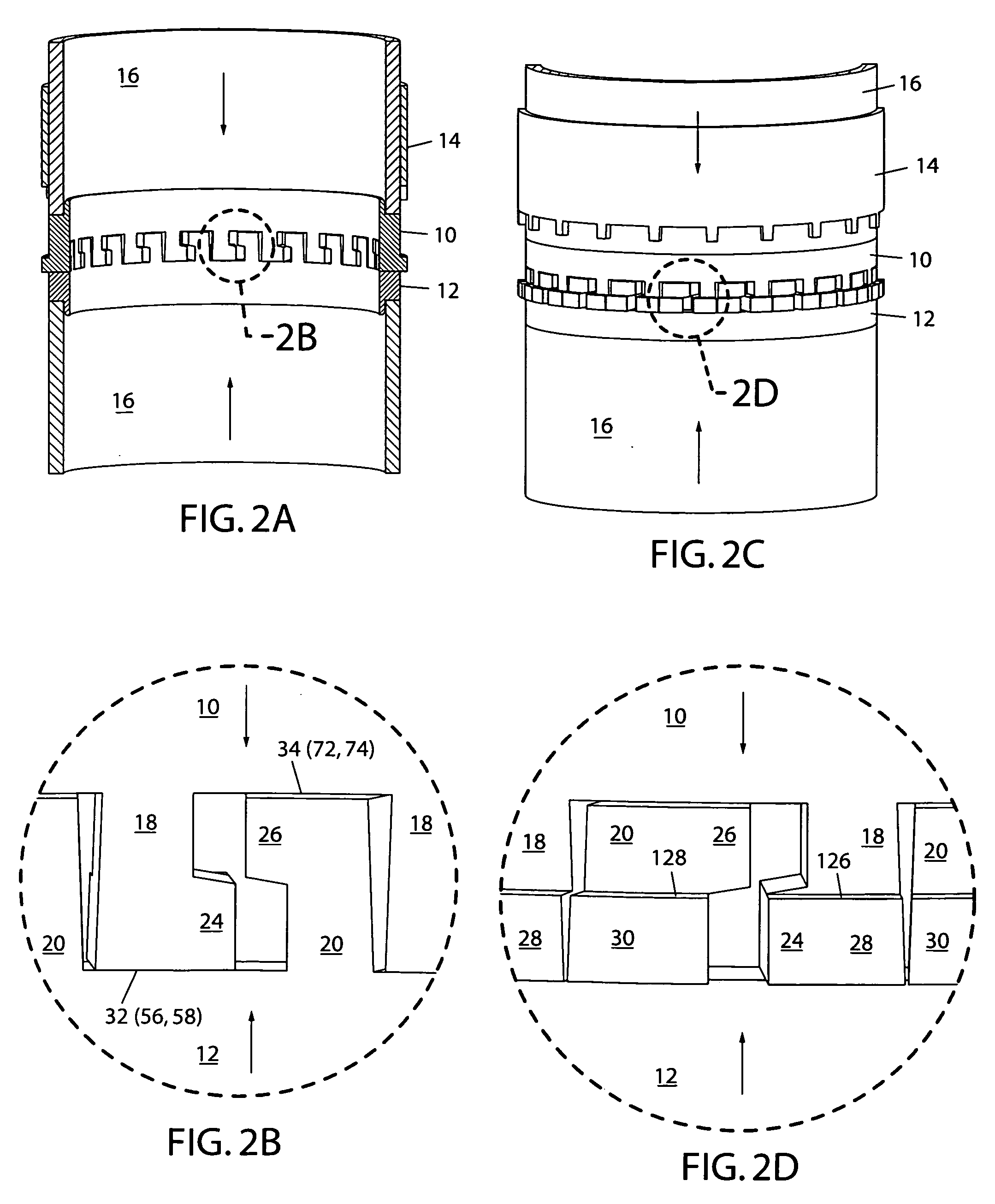Quick torque coupling
a torque coupling and torque technology, applied in the direction of rod connection, mechanical equipment, manufacturing tools, etc., can solve the problems of btc-type design, unsuitable for true kinematic applications, misalignment of the positioning apparatus as a whole, etc., and achieve the effect of high reliability and suitable for fail-safe applications
- Summary
- Abstract
- Description
- Claims
- Application Information
AI Technical Summary
Benefits of technology
Problems solved by technology
Method used
Image
Examples
Embodiment Construction
[0120] A preferred embodiment of the present invention is illustrated in FIGS. 1A and 1C, wherein both figures show the disassembled (unlocked) condition of the invention. Two steel or aluminum rings 10 and 12, each with a circumferential array of teeth 18 and 20 respectively, are welded or brazed to the ends of struts 16 such that their teeth extend axially outward. Other materials and / or joining techniques may be used instead. A locking ring 14 is assembled such that it slides over ring 10 with its teeth facing teeth 10. Ring 14 has a set of teeth 22, which engage the teeth 18 and 20 of rings 10 and 12 in the assembled condition. In the embodiment shown, the diameter of the struts 16 is about 3 inches. The wall thickness of the struts is about 1 / 16 inch, as is that of the ring 14. The teeth 18 and 20, of rings 10 and 12 have radial thickness that varies, but are not diametrically solid.
[0121] Although rings 10 and 12 each have a set of interlocking teeth 18 and 20 respectively, e...
PUM
 Login to View More
Login to View More Abstract
Description
Claims
Application Information
 Login to View More
Login to View More - R&D
- Intellectual Property
- Life Sciences
- Materials
- Tech Scout
- Unparalleled Data Quality
- Higher Quality Content
- 60% Fewer Hallucinations
Browse by: Latest US Patents, China's latest patents, Technical Efficacy Thesaurus, Application Domain, Technology Topic, Popular Technical Reports.
© 2025 PatSnap. All rights reserved.Legal|Privacy policy|Modern Slavery Act Transparency Statement|Sitemap|About US| Contact US: help@patsnap.com



